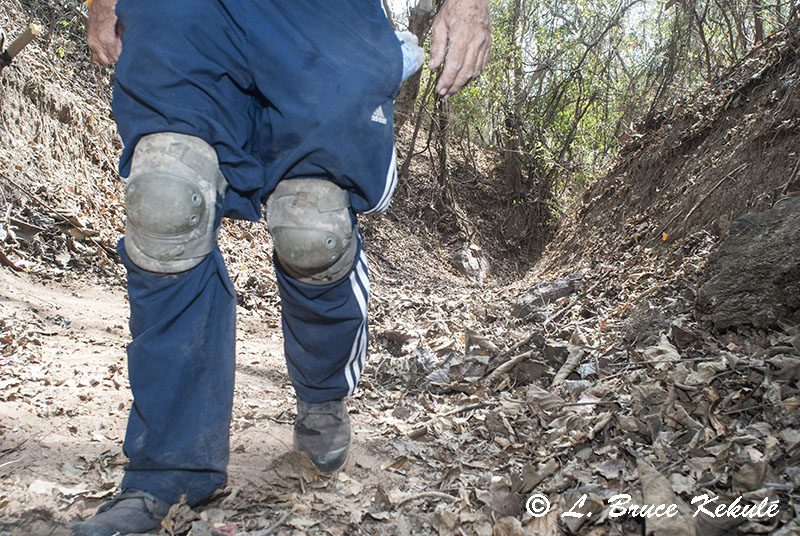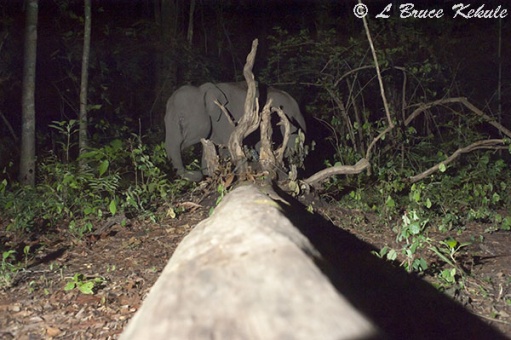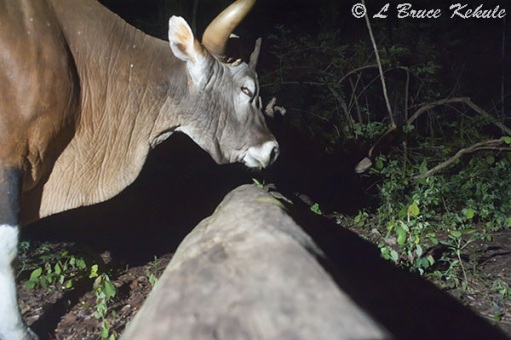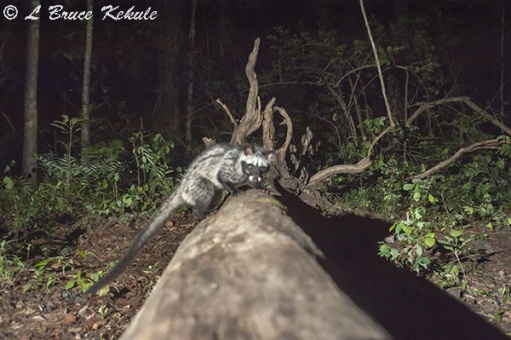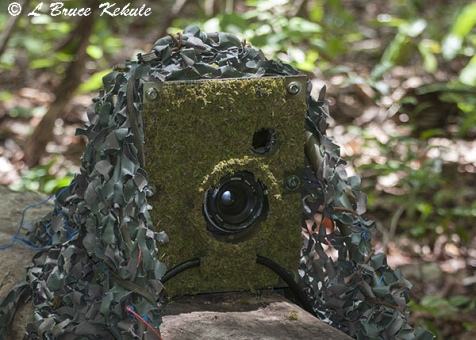Posts Tagged ‘common palm civet’
A camera trap set at Ken River Lodge – Panna Tiger Reserve – India
Nikon D3000 travel cam catches a palm civet, jackals, wild boar, langur monkey and a semi-feral cat…!
An Asian palm civet in a dry stream bed at the Ken River Lodge, Panna Tiger Reserve, Madhya Pradesh, India…!
In March 2016, I made a trip to Panna Tiger Reserve in India after tigers. I was lucky catching two sisters, the offspring of T1, Panna’s first tiger reintroduced from near-by Bandhavgarh Tiger Reserve. Poachers completely wiped out the big cat in Panna in one year during 2008 but there are 32 tigers thriving now which is an amazing conservation success story.
Jackal shown here bolting from the flash…! These canidae usually travel in pairs…!
I stayed at the Ken River Lodge outside the reserve several kilometers from the front gate to the park. Pugpundee Safari Company manages this hotel plus others in Bandhavgarh, Pench, Kanha and Satpura tiger reserves in the State of Madhya Pradesh.
A wild boar scavenging in the stream bed…!
The owner wanted to see what was roaming the grounds and invited me to set a camera trap in a dry stream bed not far from my room. After two weeks, I came back through to check the Nikon D3000 with a Nikon 24mm manual lens, one Nikon SB-28 flash and a SSII external sensor.
A gray or ‘Hanuman’ langur leaf monkey during the day….!
The cam caught a palm civet, a pair of jackals, a wild boar and a langur monkey plus a semi-feral cat. Although not as glamorous as a tiger or leopard, these wild creatures are still just as important to the ecosystem excluding the cat. Leopard tracks have been found near the river..!
A semi-feral cat; sometimes this feline was found sleeping up at the resort…!
The ‘tiger hunter’ with knee pads walk-testing the D3000…!
University of Tennessee Wildlife Presentation – November 11, 2013
This is ‘Part One’ titled ‘Chasing a Wild Dream – Predators’ of the presentation I did for the Biology Club at the University of Tennessee on Veteran’s Day, November 11, 2013. There is some old footage but some new including a black leopard in the early morning walking by my cam..one of my favorite videos…..enjoy..!
This is ‘Part Two’ titled ‘Chasing a Wild Dream – Herbivores’. Again, some old and some new….enjoy..!
Nikon D700 trail cam: The first set
Elephant, banteng, civet and bat captured
Wild elephant; not sure why the cam tripped with the jumbo on the far side of the sensor??
Went into Huai Kha Khaeng to check my D700 trail cam a couple of days ago….the weather was horrible with a big storm brewing and rain had already started to fall. I had to get in and get out.
The young elephant headed for the cam; and it tripped again.
Instead of topping up the card, batteries and desiccant, I decided to pull the unit and two flashes that were not working. One Nikon SB28 flash was still OK and I left it.
A powerful trunk that tried to move the cam but could not budge it.
After downloading the card, I got a pleasant surprise that the D700 had performed quite well on its first stint. Elephant, banteng, a civet plus a bat had tripped the cam.
This elephant ripped most of the camouflage netting off the cam.
There were some strange false triggers but I guess with bats or birds that fly through, the unit will trip to an empty frame. I was elated to say the least.
A mature banteng bull.
I will go back in a week and will move the D700 about two-three feet closer as there is too much log in the frame and the composition is still not right.
This bull looks like he is blind in the right eye.
The elephants ripped most of the camouflage netting off the cam but it survived intact and was still as solid as the log meaning they could not budge it. The moss was OK.
A bat flying through.
Needless to say, I look forward to more sets from this cam. I will be adding another flash to the right side of the log to get rid of the shadow. It is just a matter of time before a tiger or leopard jumps this log.
A common palm civet posing on the log.
Unfortunately, the civet was just inside the focal plane and therefore not in focus. But they are so common here, I’m positive I will get this critter again…! Enjoy.
The Nikon D7oo trail cam on a fallen tree.







